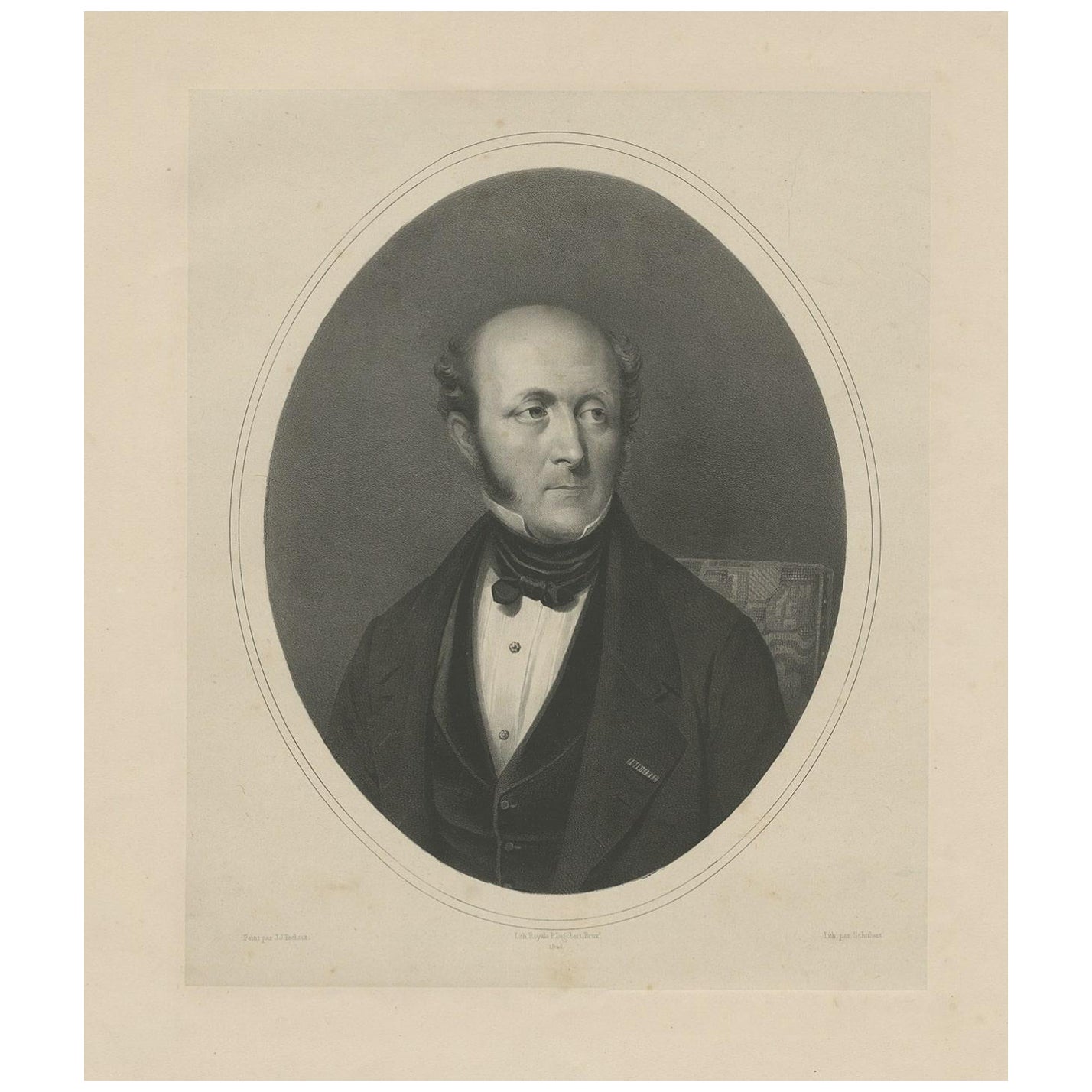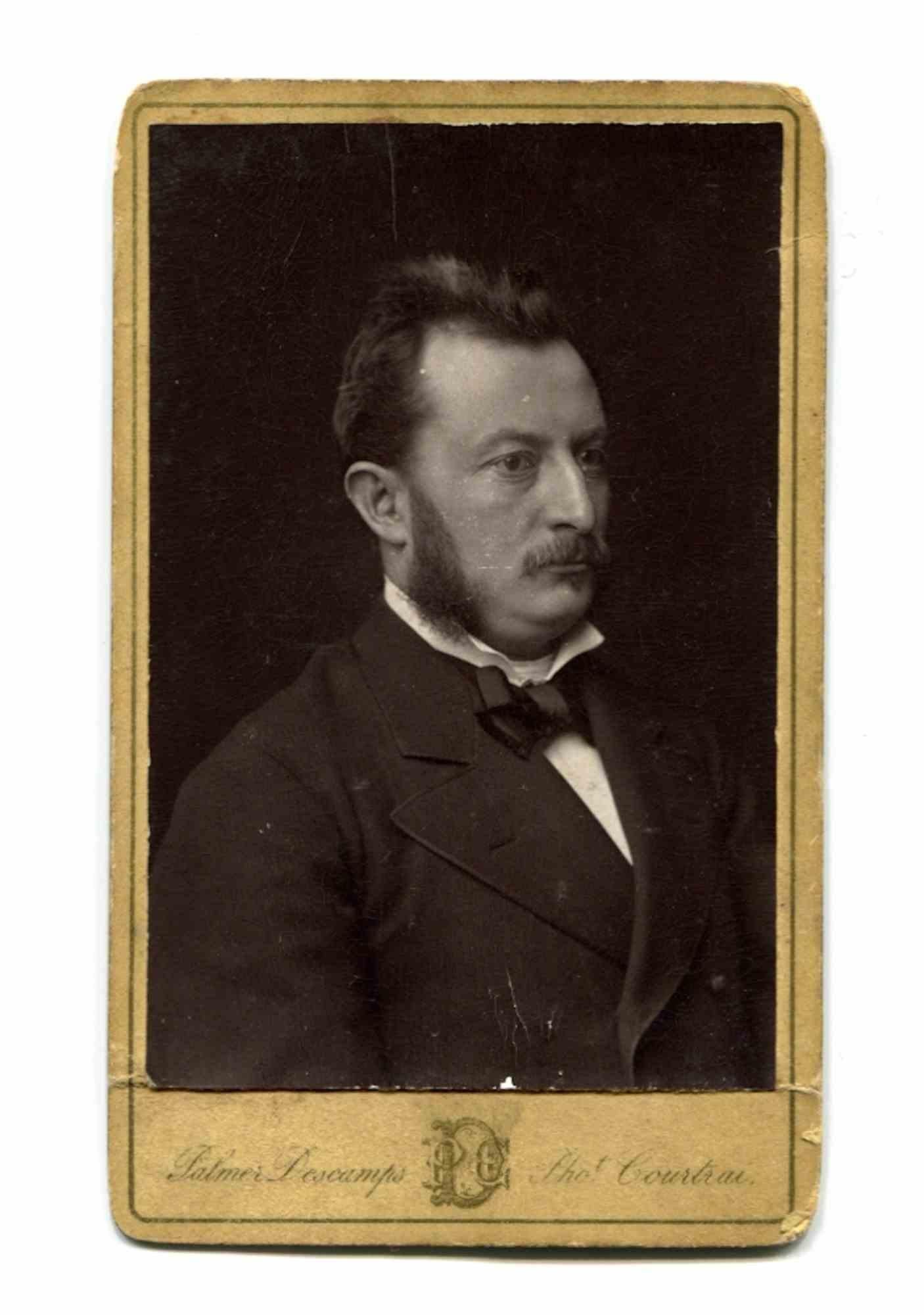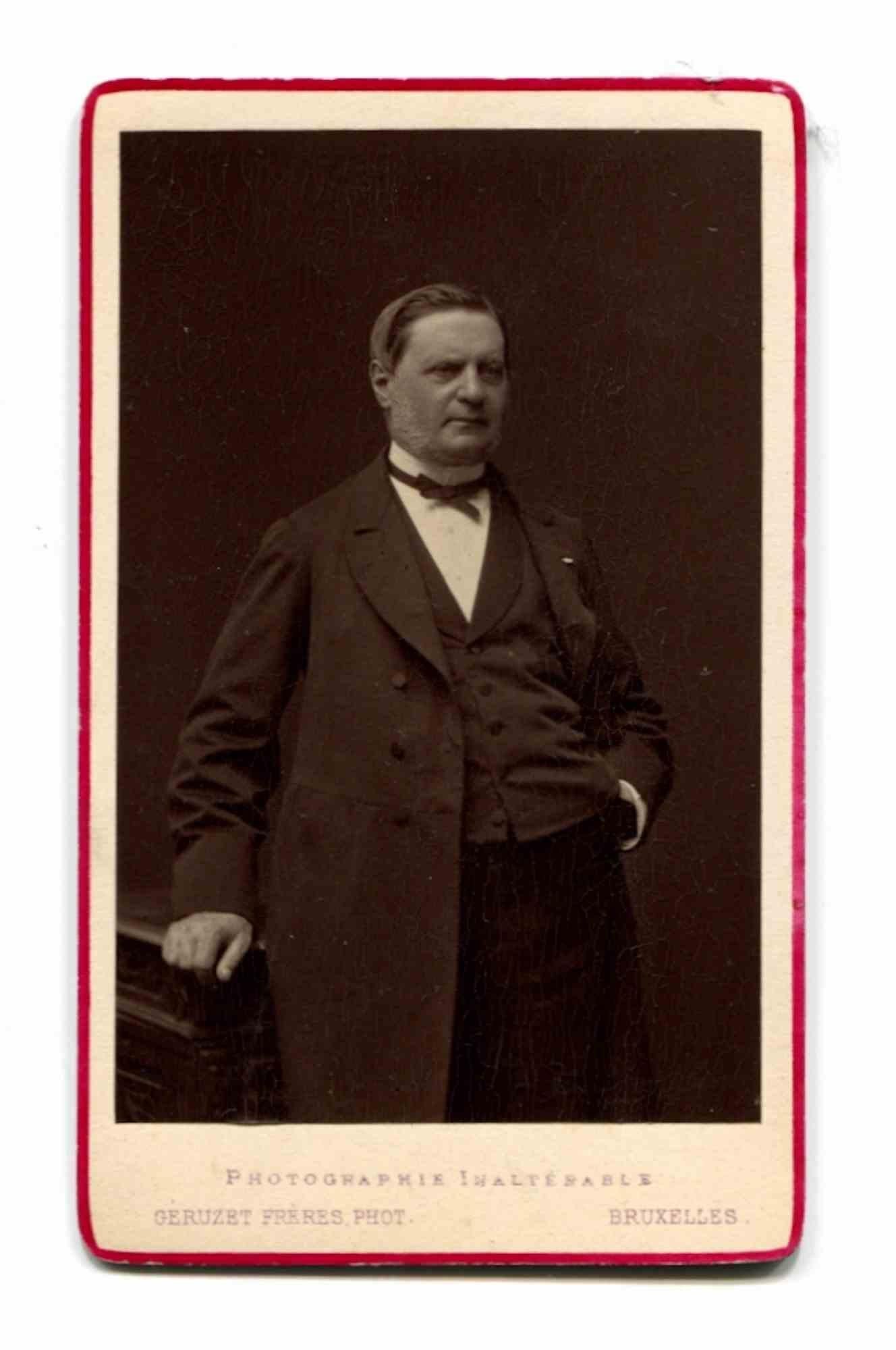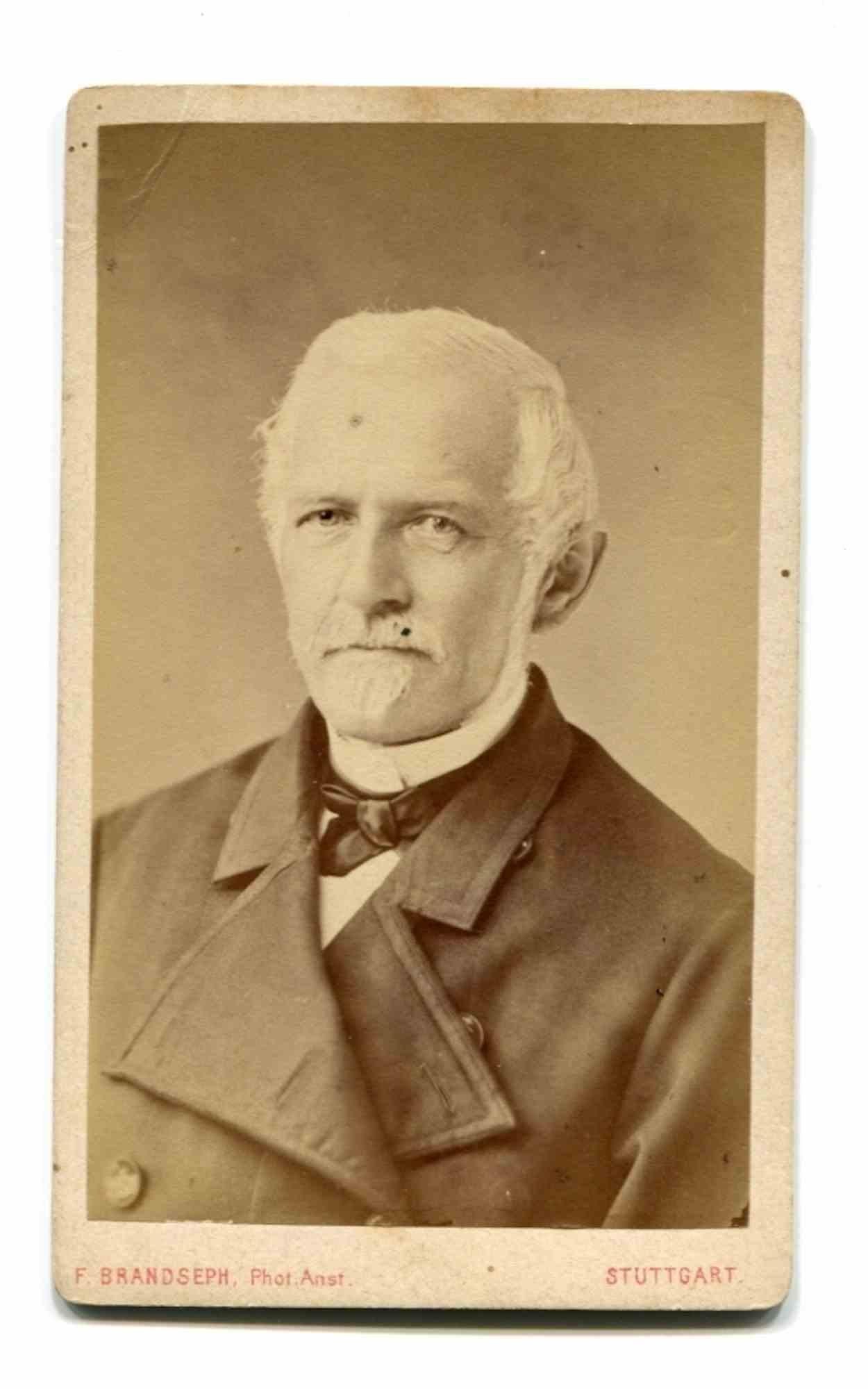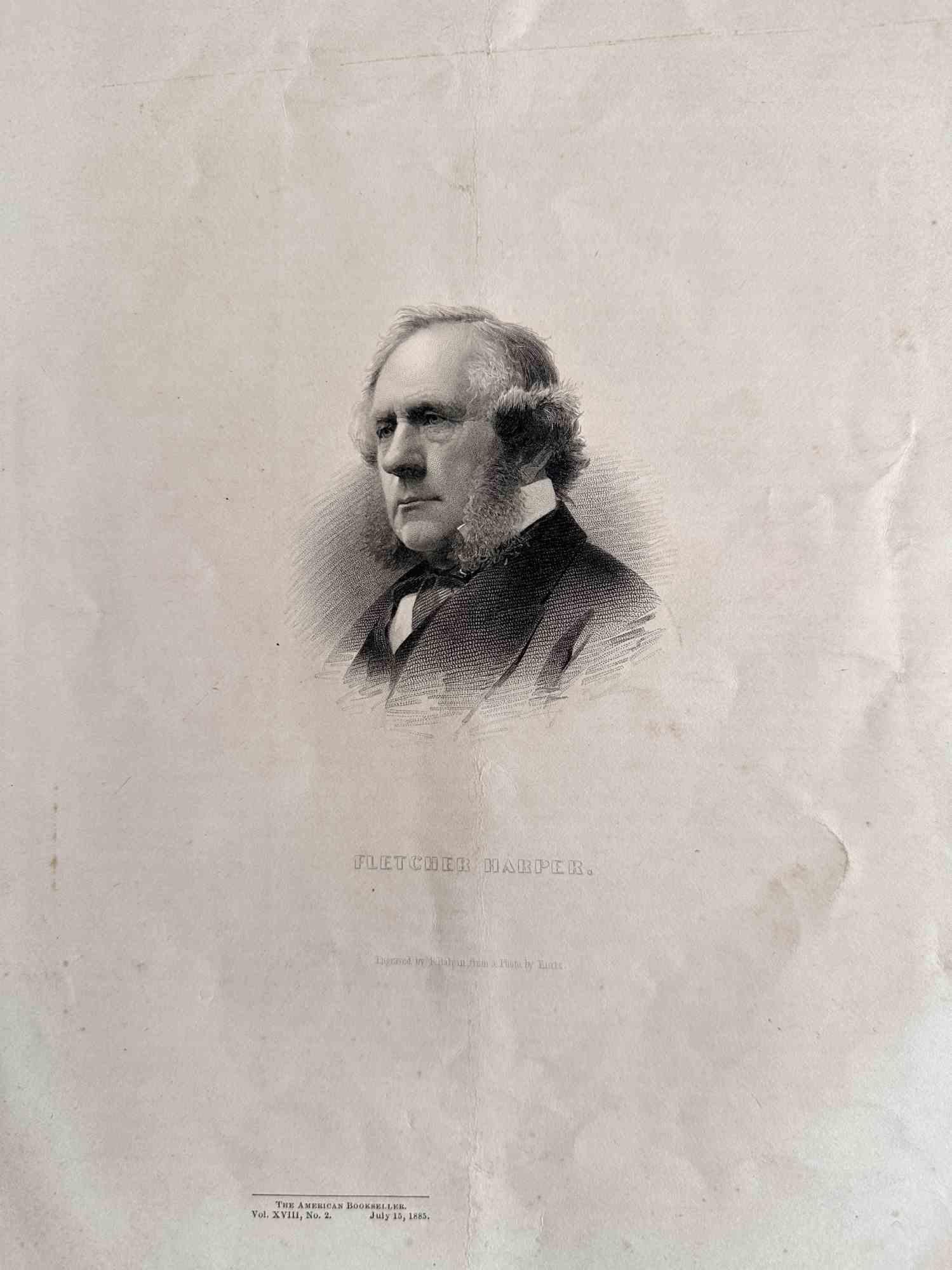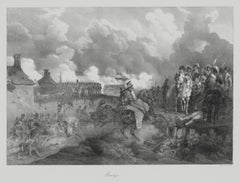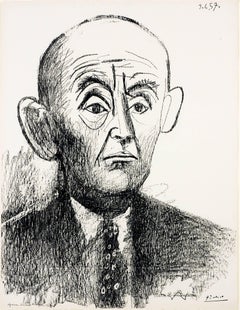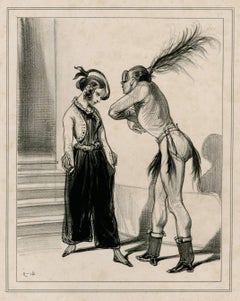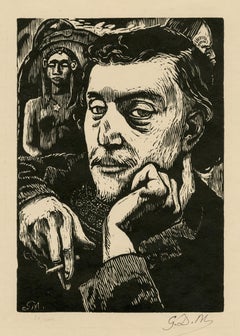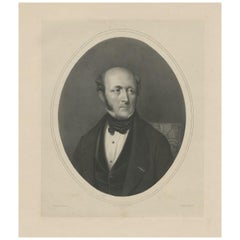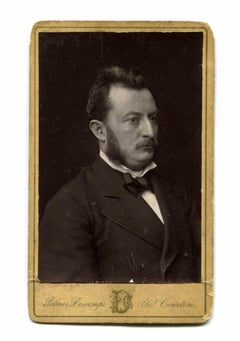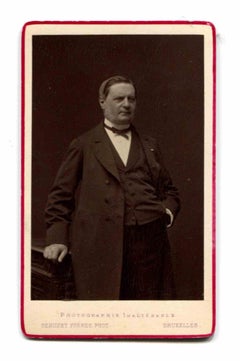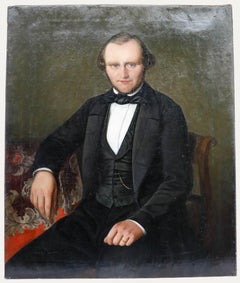Items Similar to Richard Wagner
Want more images or videos?
Request additional images or videos from the seller
1 of 5
Abot, Eugene-Michel-JosephRichard Wagnerc. 1880
c. 1880
$275
£213.47
€242.14
CA$392.66
A$432.68
CHF 224.42
MX$5,146.09
NOK 2,838.87
SEK 2,659.42
DKK 1,808.40
About the Item
Richard Wagner
Etching, c. 1880
Signed in the plate (see photo)
Edition: c. 200 impressions
Condition: mint
Image/Plate size: 6 5/8 x 4 3/4 inches
Sheet size: 14 3/8 x 10 7/8 inches
Provenance: Edmubd Sagot (1857-1917), noted Parisian art dealer and collector
Richard Wagner Biography
Composer, Conductor (1813–1883)
Richard Wagner is best known for creating several complex operas, including Tristan and Isolde and Ring Cycle.
Synopsis
Born in Germany on May 22, 1813, Richard Wagner went on to become one of the world's most influential—and controversial—composers. He is famous for both his epic operas, including the four-part, 18-hour Ring Cycle, as well as for his anti-semitic writings, which, posthumously, made him a favorite of Adolf Hitler. There is evidence that Wagner's music was played at the Dachau concentration camp to "re-educate" the prisoners. Wagner had a tumultuous love life, which involved several scandalous affairs. He died of a heart attack in Venice on February 13, 1883.
Early Life
Wilhelm Richard Wagner was born on May 22, 1813, in Leipzig, Germany, and went on to become one of the world's most influential—and controversial—composers.
Richard Wagner was famous for both his complex operas, such as the four-part, 18-hour Ring Cycle
Wagner's parentage is uncertain: He is either the son of police actuary Friedrich Wagner, who died soon after Richard was born, or the son of the man he called his stepfather, the painter, actor and poet Ludwig Geyer (whom his mother married in August 1814).
As a young boy, Wagner attended school in Dresden, Germany. He did not show aptitude in music and, in fact, his teacher said he would "torture the piano in a most abominable fashion." But he was ambitious from a young age. When he was 11 years old, he wrote his first drama. By age 16, he was writing musical compositions. Young Wagner was so confident that some people considered him conceited.
The New York Times would later write in its obituary of the famous composer, "In the face of mortifying failures and discouragements, he apparently never lost confidence in himself."
Acclaimed Works
Wagner attended Leipzig University in 1831, and his first symphony was performed in 1833. He was inspired by Ludwig van Beethoven and, in particular, Beethoven's Ninth Symphony, which Wagner called "that mystic source of my highest ecstasies." The following year, in 1834, Wagner joined the Würzburg Theater as chorus master, and wrote the text and music of his first opera, Die Feen (The Fairies), which was not staged.
In 1836, Wagner married the singer and actress Minna Planer. The couple soon moved to Königsberg, where Wagner took the position of musical director at the Magdeburg Theatre. There, also in 1836, Das Liebesverbot was produced, with Wagner writing both the lyrics and the music. He called his concept "Gesamtkunstwerk" (total work of art)—a method, which he frequently used, of weaving German myths with larger themes about love and redemption.
After moving to Riga, Russia, in 1837, Wagner became the first musical director of the theater and began work on his next opera, Rienzi. Before finishing Rienzi, Wagner and Minna left Riga, fleeing creditors, in 1839. They hopped on a ship to London and then made their way to Paris, where Wagner was forced to take whatever work he could find, including writing vaudeville music for small theaters. Wagner was part of the quasi-revolutionary "Young Germany" movement, and his leftist politics were reflected in Rienzi; unable to produce Rienzi in Paris, he sent the score to the Court Theatre in Dresden, Germany, where it was accepted. In 1842, Wagner's Rienzi, a political opera set in imperial Rome, premiered in Dresden to great acclaim.
The following year, The Flying Dutchman was produced to critical acclaim. Considered a great talent by this time, Wagner was given the Prussian order of the Red Eagle and appointed director of the Dresden Opera. In 1845, Wagner completed Tannhäuser and began working on Lohengrin. In 1848, while preparing for a production of Lohengrin in Dresden, the revolutionary outbreak in Saxony occurred and Wagner, who had always been politically vocal, fled to Zurich.
Unable to enter Germany for the next 11 years due to his political stances. He also wrote Opera and Drama and began developing what would become his famous Ring Cycle, which consisted of four separate operas tied together by leitmotifs, or recurring musical themes which link plot elements.
The Ring Cycle was ahead of its time in that it combined literature, visual elements and music in a way that would anticipate the future of film. Film composers, including John Williams, were inspired by Wagner's use of leitmotifs. His work would later influence modern film scores, including those of the Harry Potter and Lord of the Rings film series.
After meeting and falling in love with Mathilde Wesendonck, the wife of Otto Wesendonck, Wagner was inspired to write Tristan and Isolde. His interest in Wesendonck, coupled with other events in his life, eventually led to his separation with his wife, Minna.
In 1862, Wagner was finally able to return to Germany. King Ludwig II, a fan of Wagner's work, invited Wagner to settle in Bavaria, near Munich, and supported him financially. Wagner didn't stay long in Bavaria, once it was discovered that he was having an affair with Cosima, the wife of the conductor Hans van Bülow, and Franz Liszt's illegitimate daughter. Bülow, who apparently condoned the affair, directed Tristan and Isolde in 1865. Wagner and Cosima had two children together before finally marrying in 1870.
The first two operas of The Ring Cycle, Das Rheingold and Die Walküre, were presented in Munich in 1869 and 1870. The Ring Cycle was finally performed in its entirely—all 18 hours—in 1876. Wagner completed his last opera, Parsifal, in January 1882, and it was performed at the Bayreuth Festival that same year.
Death and Legacy
Wagner died of a heart attack on February 13, 1883, at age 69, while vacationing in Venice, Italy for the winter. His body was shipped by gondola and train back to Bayreuth, where he was buried.
Many critics reduce his musical legacy for his anti-Semitic beliefs.
Courtesy: Biography
About the Seller
5.0
Recognized Seller
These prestigious sellers are industry leaders and represent the highest echelon for item quality and design.
Gold Seller
Premium sellers maintaining a 4.3+ rating and 24-hour response times
Established in 1978
1stDibs seller since 2013
825 sales on 1stDibs
Typical response time: <1 hour
Associations
International Fine Print Dealers Association
- ShippingRetrieving quote...Shipping from: Akron, OH
- Return Policy
More From This Seller
View AllNapoleon a Bautzen
By Hippolyte Bellangé
Located in Fairlawn, OH
Napoleon a Bautzen
Lithograph, 1822
Signed in the stone (see photo)
From: Arnault, A. V.
Vie Politique et Militaire de Napoleon (120 plates)
Published, Paris, Librairie Historiquem 1...
Category
1820s Romantic Figurative Prints
Materials
Lithograph
Portrait de D. H. Kahnweiler I
By Pablo Picasso
Located in Fairlawn, OH
Portrait de D. H. Kahnweiler I
Lithograph, 1957
Estate Signature Stamp lower right
Provenance: Picasso Estate
Marina Picasso, her stamp on reverse
Annotated in ...
Category
1950s French School Portrait Prints
Materials
Lithograph
"Do you wish to escape, my wild one"
By Paul Gavarni
Located in Fairlawn, OH
Unsigned
Edition: 12 (proof before lettering)
Provenance:
Charles Sessler, Philadelphia
Considered by A. & B. as "rare, rare, rare."
Reference: A. & B. 256 i/II, proof...
Category
19th Century Figurative Prints
Materials
Lithograph
Portrait de Paul Gauguin
Located in Fairlawn, OH
Portrait de Paul Gauguin
Woodcut, c. 1900
Initialed in pencil lower right
Numbered in pencil lower left
Edition: 100 (34/100)
Annotated verso: “epreuve sur japon”
Condition: Excellent
Image size: 6 3/4 x 4 3/4 inches
Sheet size: 11 x 8 5/8 inches
Note: Born in New York, Monfreid studied in France at the Academy Julian. He was a friend of Gauiguin, Verlaine and Maillol. He formed a noted collection of works by Gauguin. In 1924, Monfreid published the manuscript for Paul Gauguin’s Noa Noa with 24 woodcuts inspired by Gauguin...
Category
Early 1900s Post-Impressionist Portrait Prints
Materials
Woodcut
Napoleon Standing
Located in Fairlawn, OH
Napoleon Standing
Lithograph, 1822
Signed in the stone lower left corner of image (see photo)
From: Arnault, A. V.
Vie Politique et Militaire de Napoleon (120 plates)
Published, Paris, Librairie Historiquem 1822
Printed by C. Motte, Paris
Considered to be the major pictorial treatise on Napoleon and his military conquests.
Image size: 14 x 9 3/4 inches
Sheet size: 23 5/8 x 17 3/4 inches
Condition: Very good
Horizontal prints...
Category
1820s Romantic Figurative Prints
Materials
Lithograph
L'Angellus
By Alfredo Müller
Located in Fairlawn, OH
L'Angellus
Etching, engraving and acquatint on Arches paper, 1902
Signed lower right by the artist (see photo)
This is a first state impression printed in a brown/black ink, one of ...
Category
Early 1900s Art Nouveau Figurative Prints
Materials
Etching
You May Also Like
Untitled Portrait by Schubert, c.1850
Located in Langweer, NL
Untitled portait of a series depicting important figures of Belgium/France. Lithographed by Schuber & Degobert after J.J. Eechout.
Artists and Engravers: Pierre-Joseph Degobert wa...
Category
Antique 19th Century Prints
Materials
Paper
$368 Sale Price
20% Off
Historical Photo - Portrait by Palmer Descamps Studio - 19th Century
Located in Roma, IT
Historical Photo - Portrait is a vintage photo, realized in the 19th Century by the belgian studio Palmer Descamps.
The artwork is a well-balanced composition.
Category
19th Century Modern Figurative Photography
Materials
Photographic Paper
Portrait of Enrico Tamberlik - Vintage Photo - 19th Century
Located in Roma, IT
Portrait of Enrico Tamberlik is a vintage photo, realized in the late 19th Century .
The artwork is a well-balanced composition.
Category
19th Century Contemporary Figurative Photography
Materials
Photographic Paper
19th Century Oil - Gentleman of the House
Located in Corsham, GB
A meticulously detailed 19th-century portrait of a distinguished Victorian gentleman clad in elegant finery. His gold pocket watch chain drapes subtly across his waistcoat, while a g...
Category
19th Century Portrait Paintings
Materials
Oil
Historical Photo - Portrait of Nicola Miraglia - Vintage Photo - 19th Century
Located in Roma, IT
Historical Photo - Portrait of Nicola Miraglia is a vintage photo, realized in the late 19th Century by F. Brandseph, Stuttgart.
The artwork is a well-balanced composition.
Category
19th Century Modern Figurative Photography
Materials
Photographic Paper
Portrait of Fletcher Harper - Lithograph by F. Halpin - 1885
Located in Roma, IT
Portrait of Fletcher Harper is a lithograph print on paper realized by F. Halpin in 1885.
Signed and Titled on the plate
Good conditions with slight foxing and folding.
Category
1880s Modern Figurative Prints
Materials
Lithograph
More Ways To Browse
Antique Police
Harry Potter
Germany Fan
Wagner Opera
Kaws What Party Print
Klimt Gustav Poster
Klimt Poster
Leroy Neiman Signed Lithograph
Lichtenstein Crying Girl
Lichtenstein Shipboard Girl
Lichtenstein Studio
Lucien Jonas
Mckenney Hall Seminole
Peter Nixon
Picasso Fond Noir
Picasso Imaginary Portraits
Picasso Imaginary
Robin Morris Couples
